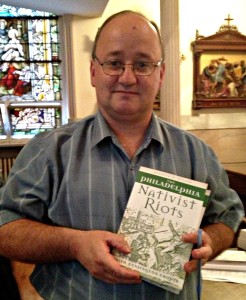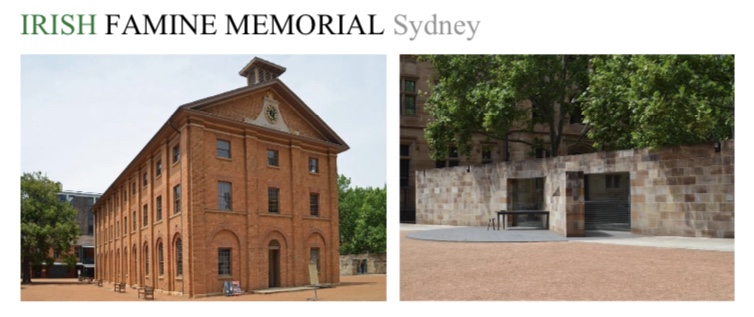It’s no secret that the 18th and 19th century Irish Catholic immigrants to the United States weren’t welcomed with open arms, but the specifics of just how badly they were treated in the City of Brotherly Love may surprise you.
In Kenneth Milano’s new book, “The Philadelphia Nativist Riots,” he documents one of the darker, and lesser-known, periods in Philadelphia history. At his book launch at St. Michael’s Church on North Second Street Thursday evening, Milano gave a two-hour talk to a rapt crowd of over 100 people. His chronicle reveals the events of May 6th through May 8, 1844, when the neighborhood of Kensington was at the epicenter of violent unrest between the recently formed Nativist Party and the increasing number of Irish Catholic immigrants in the area.
As Milano tells it, Kensington was ripe for just such an explosion.
“With all the Catholic communities forming here, the opposite side of the coin, the Protestants, were also organizing. They saw the immigration of the Irish Catholics as detrimental…this was before the potato famine.
“In 1837 the Native American Association was founded in Germantown [this was the first inception of what would become the Nativist Party and was also known as the American Republicans and eventually the Know-Nothings]…also in 1837 you had a very severe downturn in the economy—and like anytime you have a downturn in the economy, you want to point fingers at people and blame them for your troubles…This anger played out into the 1840’s.
“The American Republican Party was founded in 1843, and some of the points they argued were that the Irish Catholics were but country people…they were not educated, they didn’t understand democracy or what being a Republic meant.”
With the 1838 change to Pennsylvania law that allowed all white men 21 years of age and over to vote, and the ability to become a U.S. citizen after living in America for 5 years, the power to create change in government was shifting. Kensington was an “old district,” settled in the 1730’s and boasting a large number of families claiming relatives who had fought in the American Revolution. They didn’t want to see their power diminished by the voting choices of these new, non-native born Americans.
“So, you had the economic problems upsetting folks, you had the suffrage problem…and then the big issue was the King James Bible. In the 1830’s, Harrisburg passed a law that said the King James Bible was a required textbook to read in the public schools. And Catholics in Philadelphia were not so happy about reading a Protestant bible. This created a controversy, and the dissent stirred up the feelings among the Nativists.”
It was a meeting of the Nativists on Monday, May 3, 1844 that set the stage for the riots that followed. Milano writes a well-researched, carefully detailed account of the days of chaos and violence that week. He compares “the violence against the Irish Catholics perpetrated during the Kensington Riots of 1844” to “those actions taken by Ireland’s County Armagh’s ‘Peep of Day Boys’ in 1795 at the Battle of the Diamond…[where] the Peep of Day Boys attacked Irish Catholic homes at the ‘peep of day,’ broke open the doors of their homes, smashed anything and everything of value, tossed it out into the street and, in many cases, burnt the houses.”
He notes that the names of the Nativists who were killed or injured were easy to come by, but after all his research, he was unable to locate anything near a complete list of the Irish Catholics who were victims of the violence. Historical records indicate that there were 23 or 24 people total killed, but “the casualties are low estimates, particularly for the Irish wounded, as Philadelphia officials and newspapers at that time were not keeping track of Irish Catholics wounded, nor were the Irish reporting them…Days after the riots ended, authorities were still pulling bodies from burned Irish Catholic homes. Many of the wounded Irish did not seek help from the authorities or local hospitals.”
It’s a fascinating and disturbing account of one of our nation’s early struggles with immigration, the notion of religious freedom, and the idea that all people are created equal.
Kenneth W. Milano has written several other books on the history of local Philadelphia, including “The Hidden History of Kensington and Fishtown.” For more information, or to order “The Philadelphia Nativist Riots,” visit Kenneth’s website. The setting of the book launch, at St. Michael’s Church, was particularly fitting as St. Michael’s was one of the Catholic Churches completely destroyed during the riots. It was rebuilt in 1847, and stands today as a proud landmark in its Philly neighborhood. For more information, go to St. Michael’s website.


